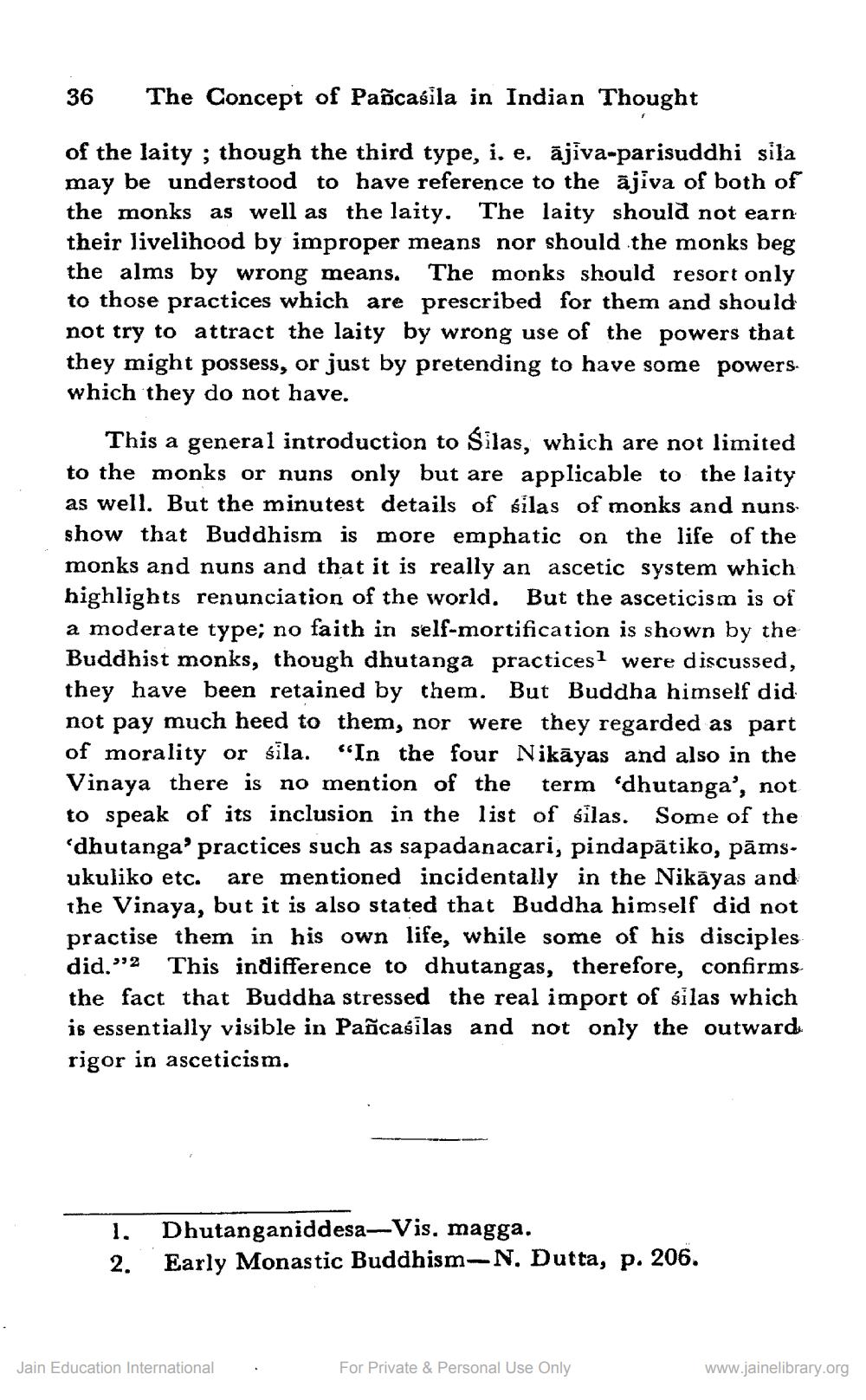________________
36
The Concept of Pañcasila in Indian Thought
of the laity ; though the third type, i. e. äjiva-parisuddhi sila may be understood to have reference to the ājiva of both of the monks as well as the laity. The laity should not earn their livelihood by improper means nor should the monks beg the alms by wrong means. The monks should resort only to those practices which are prescribed for them and should not try to attract the laity by wrong use of the powers that they might possess, or just by pretending to have some powers. which they do not have.
This a general introduction to Silas, which are not limited to the monks or nuns only but are applicable to the laity as well. But the minutest details of silas of monks and nuns. show that Buddhism is more emphatic on the life of the monks and nuns and that it is really an ascetic system which highlights renunciation of the world. But the asceticism is of a moderate type; no faith in self-mortification is shown by the Buddhist monks, though dhutanga practices? were discussed, they have been retained by them. But Buddha himself did not pay much heed to them, nor were they regarded as part of morality or sila. “In the four Nikāyas and also in the Vinaya there is no mention of the term 'dhutanga', not to speak of its inclusion in the list of silas. Some of the dhutanga' practices such as sapadanacari, pindapātiko, pāms. ukuliko etc. are mentioned incidentally in the Nikāyas and the Vinaya, but it is also stated that Buddha himself did not practise them in his own life, while some of his disciples did."'2 This indifference to dhutangas, therefore, confirms the fact that Buddha stressed the real import of silas which is essentially visible in Pancasilas and not only the outward rigor in asceticism.
1. Dhutanganiddesa-Vis, magga. 2. Early Monastic Buddhism-N, Dutta, p. 206.
Jain Education International
.
For Private & Personal Use Only
www.jainelibrary.org




